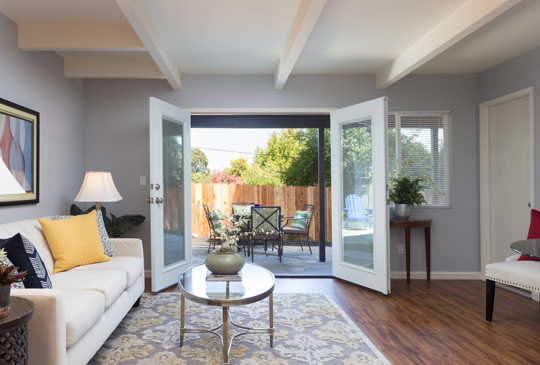According to an article in the New York Times, in 2019, 94% of residential land in San Jose was zoned for detached, single-family homes. The article, “Cities Start to Question an American Ideal: A House With a Yard on Every Lot,” (by Emily Badger and Quoctrung Bui, June 18, 2019) noted, “Townhomes, duplexes and apartments are effectively banned in many neighborhoods. Now some communities regret it.”
And rightly so, particularly high-density, urban communities like those in the Bay Area.

Fast-forward to 2023 California Zoning Laws
Although a housing shortage is impacting many places in the U.S., it is especially true here in the Bay Area. Fortunately, changes in California zoning laws have recognized the value of ADUs in helping to address the availability of more housing – and housing that’s more affordable. ADUs represent an attractive opportunity to be part of the solution, particularly when it comes to multi-family housing.
California zoning laws now allow for both conversions and detached ADUs on multi-family properties. What that means is property owners with unused, non-habitable spaces like garages, storage rooms and basements can turn that space into residential space in what’s considered an ADU conversion. Here in the Bay Area, you can add up to 25% of the total number of units in a multi-unit property as ADU conversions, as long as you’re converting non-livable space. There really is no more efficient way to increase cash-flow and ratchet up the value of your multi-family property than adding habitable space.
Plus, you can potentially also add two detached units using the ADU process if you have the space. When considering detached ADUs, a property may be able to add two to the existing property, as long as all requirements – such as setbacks from the property lines – are met.
Say, “Yes in My Backyard” to ADUs!

“NIMBY” is a term that’s been used quite a lot over the past several years. It stands for “not in my backyard.” What it doesn’t stand for is addressing California’s housing shortage collaboratively. According to Oxford Languages, its definition is, “a person who objects to the siting of something perceived as unpleasant or hazardous in the area where they live, especially while raising no such objections to similar developments elsewhere.”
The counter to “NIMBY” is “YIMBY” (yes in my backyard), an effort to build affordable, multi-family homes in areas that are desirable but that have not always been welcoming to new developments (to put it mildly, even here in the Bay Area). ADUs represent a win-win situation, because they represent housing that’s fairly priced and in highly desirable areas…your own property/ies. At least in relation to ADUs, you can confidently say, “Yes in my backyard!” without offending anyone, while at the same time generating income and increasing your property value in the long run. ADUs are a positive investment in countless ways.
California Zoning Laws Are Opening More ADU Doors.
That states like California and cities like San Francisco and Oakland are streamlining the zoning process in order to make ADUs a greater possibility is a huge win for property owners and residents alike. This holds true for both renters and property owners who want to make it easier for relatives to live on their property with more autonomy and privacy.
What’s more, when California zoning laws allow for more housing, there is more likelihood that commute times will be lessened (or eliminated) as people can live closer to where they work, and often closer to more public transportation options. This is certainly an added bonus for the environment.
In Oakland, the Oakland Planning Commission in its eighty-year housing plan, is proposing changes that if approved would eliminate zoning restrictions in many areas that have previously limited construction to single-family homes. Single-family zoning restrictions in Oakland have been evolving for several years already, which has paved the way for additional ADUs city-wide. Many homeowners have also been able to replace their previous homes with duplexes. Additional changes could mean minimizing the setback and parking space requirements for buildings, as well as increasing permitted heights, which could encourage developers of multi-family properties. We’ll be watching this closely and sharing further developments.
Adapt Dwellings: We’re the Bay Area Experts When It Comes to Putting Your Money to Work Through ADUs.
We specialize in helping clients take full advantage of the many benefits the streamlined ADU process represents. Each project begins with an ADU Feasibility Study, conducted by in-house experts consisting of a 20-year veteran building inspector and licensed architect. This provides you with a comprehensive view of what your options are, what would be required for you to do a conversion and/or add extra units, and everything you need to know in between to calculate a realistic return on your Bay Area ADU investment.
We’re also based in Oakland, and when you partner with Adapt Dwellings, you get much more than ADU specialists. You also benefit from our expertise and our relationships in the world of Bay Area real estate. We have a team with a unique ability to help our clients evaluate a full range of options when it comes to ADUs. In addition, Adapt Dwellings, Incorporated holds a Class B General Contractor license (CSLB #1098831). That means our team can not only design your ADU – we can build it, too. Navigating the complicated world of Bay Area real estate and maximizing value for our clients is our forte’!
